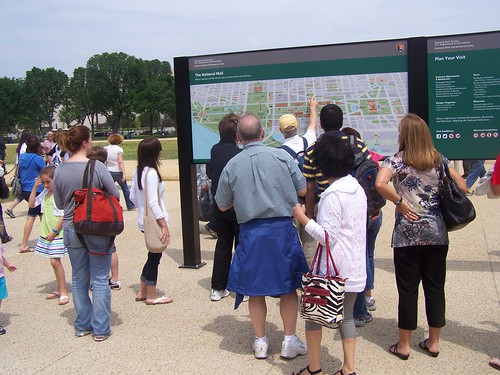Meeting Tomorrow: Draft Visitor & Commemoration Element (National Capital Planning Commission)
 Visitors & Commemoration Element Public Forum
Visitors & Commemoration Element Public Forum Wednesday, February 20, 2013
6:30 – 8:30 PM
National Capital Planning Commission
401 9th Street, NW, Suite 500, Washington, DC 20004
NCPC will host a public forum to present the draft polices for the updated Federal Visitors & Commemoration Element for the Federal Elements of the DC Comprehensive Plan. The policies are being revised to reflect greater emphasis on the federal government as a supporter of the visitor experience in the National Capital Region and on Washington, DC as a symbol to the nation. A new section includes policies that reflect NCPC’s recent research on commemoration, specifically work included in the Memorial Trends and Practice in Washington, DC report.
Visit the Federal Elements of the DC Comprehensive Plan webpage to connect to the subpage on the Visitors & Commemoration Element and the Comprehensive Plan more generally.

About the Element
The Element has four sections, on Transportation, focused on promoting sustainable transportation mode use by visitors; Visitor Information Services; Programming for Visitors; and Commemoration Policies, mostly related to the creation of new monuments.
All of the sections are decent, but general, and not very daring at pointing out gaps in the city in terms of the integration and comprehensiveness of visitor information and transportation services, such as the need for integrated transit wayfinding systems, and a coordinated system of visitor centers, or how given the increase in federal security and the difficulties posed in visiting federal buildings in the post 9/11 environment, maybe a coordinated event comparable to how Doors Open events work in the (Heritage Open Days in the United Kingdom) or Toronto, but for attractive and interesting federal buildings located in Washington.
Other comparable examples that could support the concept of Federal Doors Open include how Amtrak has held "National Train Day" for the last few years, National Public Lands Day, how the National Park Service has free entry on certain days of the year such as National Public Lands Day and the Martin Luther King Jr. Birthday holiday, and the Passport DC events at Embassies organized by CulturalTourismDC.
 Considering DC more broadly as a" heritage area"
Considering DC more broadly as a" heritage area"The Element might have been more interesting too if it would have considered DC and visitor services more broadly by using the concept of heritage areas as an organizing framework.
There are a couple types, state designated programs (both Maryland and Pennsylvania are quite active in this area) and the federal program, usually involving an act of designation by Congress (I believe that NPS can also designate heritage areas without having to get Congress involved).
Whether or not the city should be designated a "heritage area," it would behoove the various stakeholders in the city to organize, manage, and act as if the city had such a designation. The city is a "heritage area" in terms of how it is a key visitor destination because of the Federal presence, and people's desires to visit the US Capitol, White House, Washington Monument, Smithsonian Museums, Mount Vernon, Alexandria, and Georgetown, because of their association with the National narrative.
Baltimore started out as a state designated heritage area, and since has been designated a federal heritage area.
Heritage areas are organized using the concept of the cultural landscape, and have good management plans and capacity building programs to assist various cultural assets and programs.
--------
Note that DC's local Comprehensive Plan does not have a Tourism Management and Development Element. (Although I have recommended this 2005 or so.)
Charleston, SC does have a Tourism Management Plan, which is more focused on transportation management aspects of moving tourists and managing the vehicles that carry them, around and through the Old Historic District.
The National Park Service started a Washington DC Visitor Transportation Study not quite 10 years ago, with the Environmental Assessment having been released in 2010. This newsletter on the Visitor Transportation Study for the National Capital Region provides a good overview of the scope and purpose of the project.
An almost 8 year old blog entry, "Town-City branding or 'We are all destination managers now'" discusses visitor attraction and management in more detail.
-- National Heritage Areas program, National Park Service
-- Alliance of National Heritage Areas
Labels: cultural heritage/tourism, land use planning, tourism, urban history, visitor services



0 Comments:
Post a Comment
<< Home